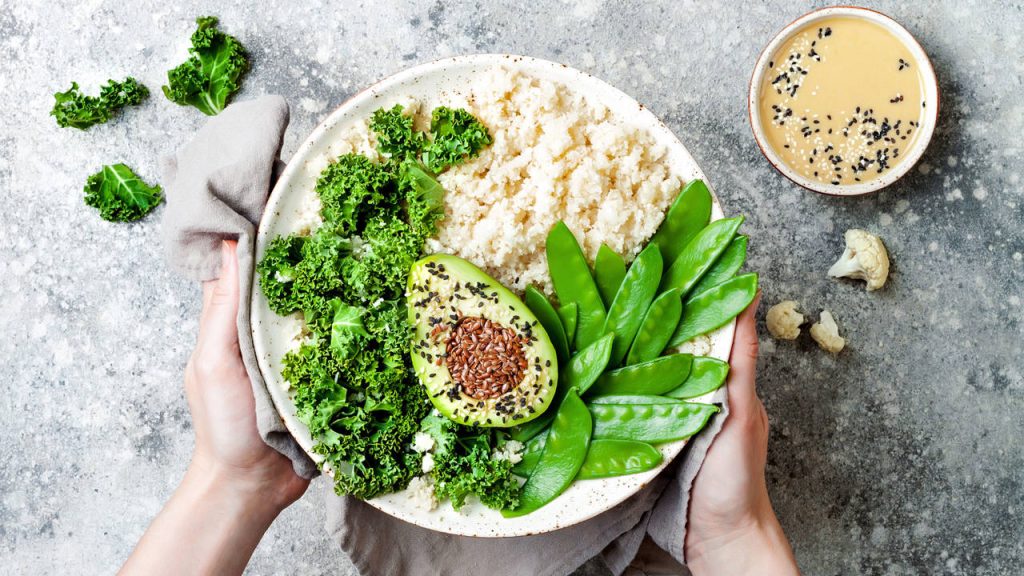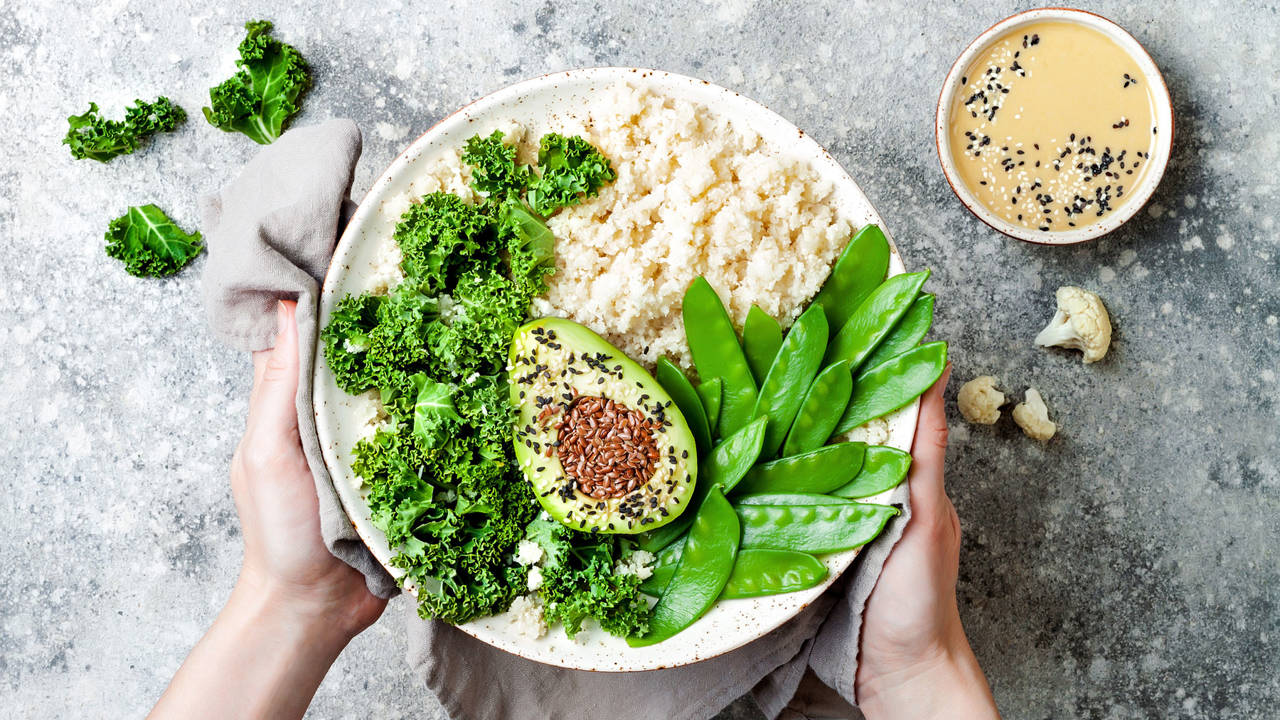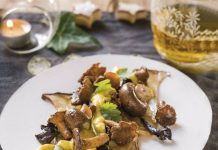Don’t get used to menstruation pain. You can avoid this by improving your diet to promote hormonal balance and avoid the inflammation that causes pain.

- Why does the period hurt?
- The keys to an anti-inflammatory diet for menstruation pain
- Chinese diet therapy against mensuration pain
- Hormones during the menstrual cycle
- Weekly menu against menstrual pain (downloadable)
Enjoying a painless menstruation is possible. Although you may suffer some discomfort during ovulation or during menstruation, it is not normal for pain to incapacitate you so that you cannot continue with your daily routines and obligations.
Food is, along with other habits, a powerful tool to regulate your hormonal cycle and reduce or eliminate menstrual pain, as long as there is no diagnosis of gynecological disease that requires other interventions.
WHY DOES THE PERIOD HURT?
Excess prostaglandins type 2 is one of the causes of menstrual pain. Prostaglandins are hormone-like substances that are part of the immune response and control physiological processes. If too many types 2 prostaglandins are formed during the cycle, discomfort appears. We can direct our dietary intervention to reduce this excess inflammation with an anti-inflammatory diet.
Hormonal dysregulation also promotes pain. If the body works well, estrogen decreases before menstruation, but if it does not, it favors inflammation and pain, as can a premature decrease in progesterone. Taking care of the liver is important, because it eliminates the excess estrogen that is produced by an incorrect diet.
THE KEYS TO AN ANTI-INFLAMMATORY DIET FOR MENSTRUATION PAIN
A diet rich in nutrients will benefit you against a diet with too many sugars, refined ingredients, ultra-processed products, etc.
During the days of bleeding, it is essential to guarantee a contribution of foods with anti-inflammatory effect and that replenish nutrients that are low in this phase.
The three macronutrients (proteins, fats and carbohydrates) and micronutrients (vitamins, minerals and antioxidant plant compounds) are essential for the hypothalamus, located in the brain, to understand that you are well nourished and regulate the hormones of hunger and satiety.
This also helps you enjoy regular ovulation and menstruation with long-term emotional balance.
Let’s start with macronutrients:
- Protein: I recommend making three meals a day and that in all of them there is a sufficient amount of protein foods, such as eggs, legumes (including soy derivatives such as tofu), nutritional yeast, nuts (raw and unsalted) and seeds.
- Fats. Nuts and seeds also provide healthy fats, essential to regulate and balance hormones and to promote anti-inflammatory processes. You can mix and grind sesame, chia and flax seeds (the latter two provide the anti-inflammatory omega-3 fatty acids) and consume two tablespoons a day along with creams, vinaigrettes, salads, etc. Prepare only the amount you are going to consume in two or three days to avoid rancidity of the mixture (you can store it in the refrigerator). Other healthy fats are extra virgin olive oil, olives (always better of organic origin to avoid additives), avocado, virgin coconut oil and ghee, which is also very interesting for the care of the intestine for its richness in butyrate.
- Carbohydrates. The best sources activate thyroid hormone and calm the nervous system, thus preventing cortisol spikes. Cooked and cooled sweet potatoes and potatoes (rich in resistant starch, which feeds intestinal bacteria with anti-inflammatory action), pumpkin, carrot, beets, parsnips, buckwheat, quinoa and whole grains are recommended. Other good sources of carbohydrates are fruits, especially red fruits, pomegranate, black grape with skin and seeds, blueberries, pineapple, papaya and organic strawberries.
As for micronutrients, all are essential, but it is advisable to ensure some for their specific properties:
- Magnesium is a muscle and nerve relaxant found in leafy greens, pure cocoa, nuts such as cashews and tofu, for example.
- Vitamin B6 promotes estrogen control and increases progesterone. It is found in bananas, eggs, carrots and green peas, among others.
- Zinc improves circulation in the uterus and may prevent or reduce the intensity and duration of pain. It is found in pumpkin seeds, chickpeas or walnuts.
- Vitamin E blocks prostaglandins that cause pain. It is provided by sunflower seeds, almonds and raw hazelnuts, among other nuts and seeds.
Remember that inflammation increases with the consumption of ultra-processed foods (containing refined or hydrogenated fats, added sugars and additives) and dairy products (except for some fermented ones). Avoid them to enjoy a painless menstruation. Also avoid alcohol and, if you are sensitive, gluten.
CHINESE DIET THERAPY AGAINST MENSITATION PAIN
According to traditional Chinese medicine, before and during menstruation it is advisable to consume red foods, because they help to recover from blood loss.
One of these foods is beets, which contains iron and inorganic nitrate. The latter is metabolized into nitric oxide, a gas that improves blood circulation in the corpus luteum and increases progesterone, which helps emotional stability, prevents short cycles and bleeding before menstruation.
The best way to consume beetroot is in the form of juice with other vegetables such as celery or cucumber, for example.
I also recommend beet creams to improve the absorption of its nutrients, and consume fermented beets, for its beneficial effect on intestinal health.
HORMONES DURING THE MENSTRUAL CYCLE
Understanding how hormones fluctuate during the menstrual cycle will help you understand why your diet is organized this way when looking to reduce menstrual pain.
The menstrual cycle consists of four phases: the period days, the follicular phase (which already began during the menstruation days), the ovulatory phase and the luteal phase. In each of the phases we have to take into account different aspects in relation to the diet.
In the follicular phase, from the fifth day of men sitting, estrogen rises and we find more muscle strength, with the ability to concentrate and regulate hunger and cravings. In the middle of the cycle, with the estrogen peak and ovulation, we are radiant and with high libido.
From ovulation, in the luteal phase, progesterone should rise. We can rely on foods rich in healthy fats, beets, spinach and minerals such as zinc and magnesium. All these foods and nutrients prevent mood swings, irritability and low mood that arrive in the luteal phase and the first days of menstruation.








